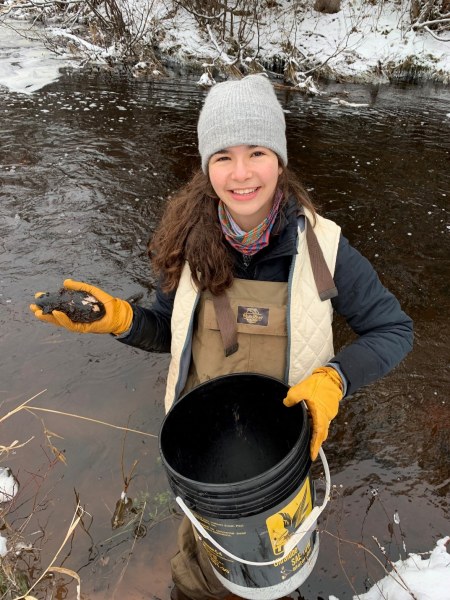UPEI and Nature PEI use new tools to look for rare species in PEI streams

In collaboration with Nature PEI, Dr. Michael van den Heuvel’s laboratory at UPEI has engaged in the first study using environmental DNA (eDNA) to determine the presence or absence of three rare species of mussel and one group of host fish, river herring, in PEI’s freshwater rivers.
With biodiversity threatened around the planet, scientists are continually seeking easier ways to monitor biodiversity. In recent years, they have used environmental DNA or eDNA—traces of genetic material shed by organisms into the environment—to determine what lives in that environment.
Freshwater mussels are little-known river species on PEI that are threatened either by declines in their juvenile host species, such as Atlantic salmon, or by declining water quality, particularly where there are high sediment loads. The distribution of river herring (alewife, also called gaspereau, and blueback herring), also a host of a mussel species, is also poorly known on the Island.
The brook floater mussel, a rare mussel found in New Brunswick and Nova Scotia, could not be detected on PEI. The other two rare species, the eastern pearlshell mussel and the alewife floater mussel, were detected in a small number of rivers on PEI. Runs of river herring, including alewife, were detected in half of the surveyed rivers. Losses of any species, especially those that filter water or provide nutrients, affect the ecological integrity of rivers.
PhD candidate Kyle Knysh directed the study at UPEI in the van den Heuvel lab. “The study has drawn our attention to the plight of the rarer freshwater mussels on PEI with just over a handful of populations still known to exist in Island watersheds. However, there is good news. The eDNA technique allowed us to discover an additional population of eastern pearlshell mussel in the Bear River and a second known population of the alewife floater.”
Rosemary Curley, president of Nature PEI, said that collaborative studies such as this are critical in understanding the state of aquatic biodiversity on PEI.
“Mussel species such as the eastern pearlshell can live to 100 years old, filtering water all of that time, and we may not realize they are in trouble until it is too late.”
Gracee Gallant, the undergraduate student who worked on the mussel part of the project, observed that the eastern pearlshell is generally only present in watersheds that have remaining Atlantic salmon populations.
“The eastern pearlshell may be exclusively dependent on the salmon as a host during the early part of its life cycle. Atlantic salmon are now only present in a fraction of their former range on PEI, so we can observe how one threatened species can affect the existence of another.”
Harriet Laver, the undergraduate student who worked on river herring, observed that, although river herring eDNA was widespread across PEI, samples taken above dams often had less DNA; however, disentangling the DNA of the alewife and the blueback herring is still difficult even when sequencing eDNA. “River herring—alewife and the blueback herring—are commercially important for the bait fishery on the Island, especially for lobster. If impoundments restrict spawning access, it has implications for the population of both herring species.”
The study was conducted with funding from the PEI Wildlife Conservation Fund, Fisheries and Oceans Canada, and the PEI Department of Environment, Energy, and Climate Action, including its Fish and Wildlife Division.